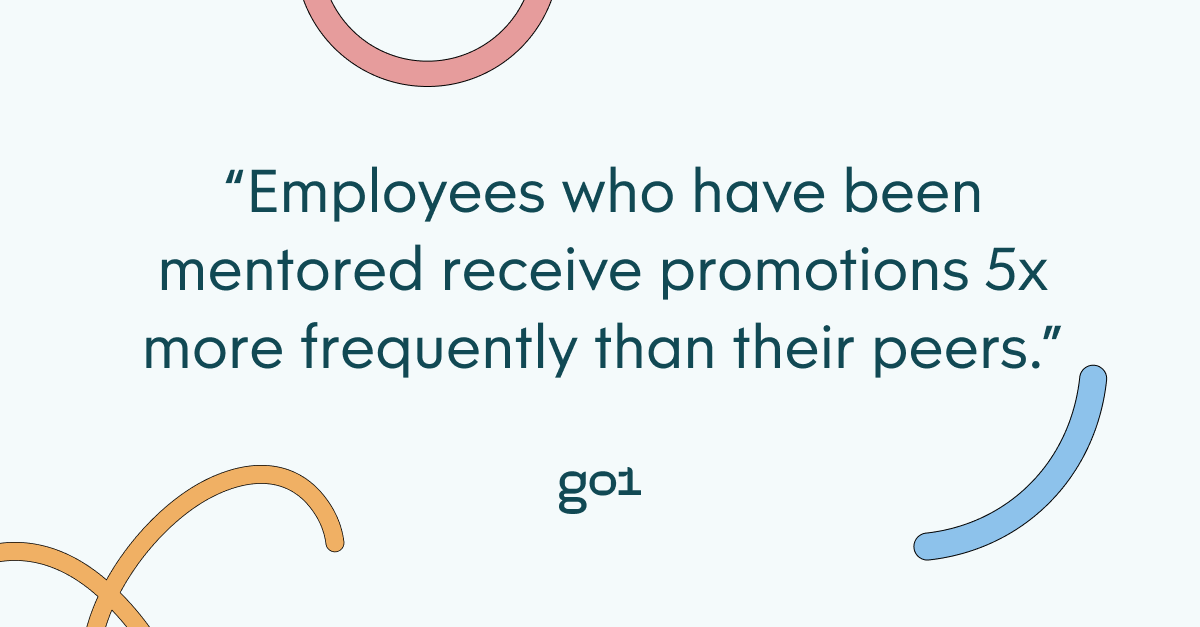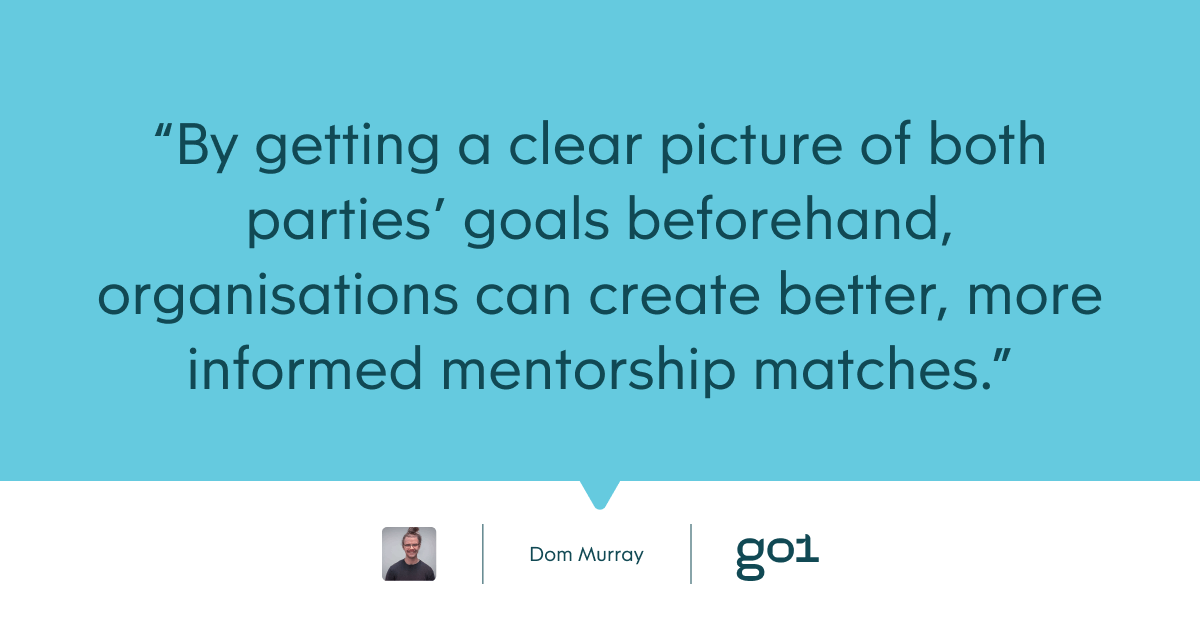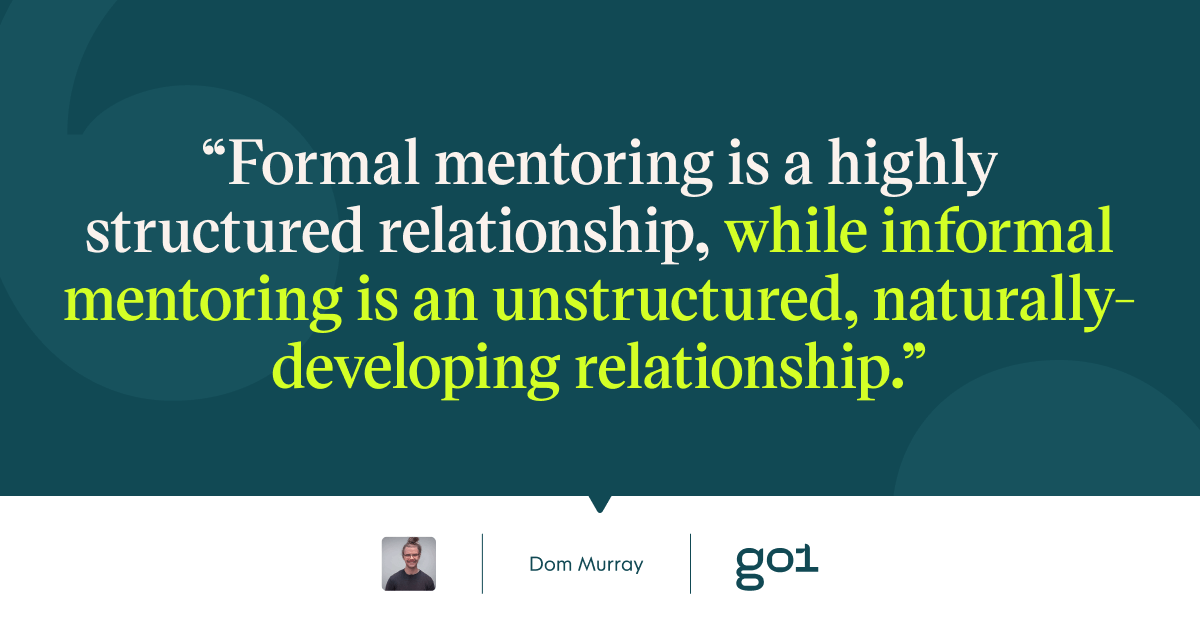
The benefits of formal vs informal mentoring

Picture this. It’s Friday afternoon, and you have an important presentation due first thing on Monday. You’re about to put the finishing touches on your work, but you’re feeling a bit unsure — you’ve never given a presentation this big before. Have you done enough? Should you add an extra slide? Will people be engaged?
Who do you turn to for advice? Your boss has already left for the weekend. Your colleagues are keen to help but are just as unsure as you. And your partner has already heard you practising every night this week. Time to turn to your mentor to ask for their perspective. After all, they have plenty of experience with this sort of thing!
This situation is tailor-made for workplace mentorship. Despite this, workplace mentorship has gone out of fashion in many industries recently. Currently, only 37% of professionals worldwide say they have a workplace mentor. We think it’s high time that number increased, allowing everyone to enjoy the full benefits of workplace mentoring.
With this in mind, we’ll shine a light on workplace mentoring, defining both formal and informal mentoring, before analysing the benefits of both mentoring styles. But first, let’s examine six benefits of workplace mentoring to set the scene.
6 benefits of workplace mentoring
1. Mentoring drives success
70% of Fortune 500 companies have formal mentoring programs, while 67% of businesses saw an increase in productivity due to mentorship.

2. Mentoring boosts happiness
Nine out of ten employees with a workplace mentor say they are happy with their job.
3. Mentorship increases retention
More than 40% of employees who don’t have a mentor have considered leaving their job to seek greener pastures. In contrast, retention rates for mentees (72%) and mentors (69%) are significantly higher.
4. Mentees get promoted
Research shows that employees who have been mentored receive promotions 5x more frequently than their peers.

5. Workplace mentorship remains low
Despite these benefits, only 37% of professionals worldwide currently have a mentor. Women are disproportionately missing out, with 63% saying they have never had a workplace mentor.
6. Mentoring moving forward
According to eLearning Industry’s 2022 State of eLearning Report, 58.2% of L&D teams plan to increase funding for coaching and mentorship programs over the next year, representing a positive step forward.
Accordingly, workplace mentoring is vital for many reasons, such as increased productivity, retention, and happiness. So, the question becomes, which type of mentoring is right for my business: formal or informal?
What is formal mentoring?
Formal mentoring usually involves a business creating an explicit, structured mentorship program, where mentors and mentees are paired up and assigned to one another. From there, the business will typically allocate time for mentors and mentees to meet and discuss any questions or concerns, as well as set goals and targets for upcoming projects.
As Together explains, “Formal mentoring is when an organisation starts a program where employees and leaders can opt-in as mentors or mentees. The administrators of the program then pair up mentors and mentees. With formal mentoring programs, a schedule is set up for both mentor and mentee to meet up regularly and discuss factors affecting the growth and understanding of the mentee.”
Therefore, the key characteristic of formal mentoring is that it is a highly structured, organised approach to mentorship. Accordingly, there is no risk that anyone who wants a mentor will miss out, as mentors are assigned to anyone who signs up for the program. As mentioned above, women disproportionately miss out on workplace mentorship opportunities compared to men, so this level playing field is a significant benefit of formal mentoring.
On the other hand, there is a greater risk that a formal mentoring relationship won’t be a good match, as it is assigned, rather than developing naturally like an informal mentoring relationship. This can potentially lead to mentors and mentees not seeing eye to eye, and the mentee having to have an awkward conversation where they ask the program administrator for a new mentor.

To avoid this pitfall, we recommend asking screening questions, where both mentors and mentees define what they want to get out of the relationship. By getting a clear picture of both parties’ goals beforehand, organisations can create better, more informed mentorship matches.
What is informal mentoring?
In contrast to formal mentoring, informal mentoring relationships develop naturally in the workplace, rather than being assigned. Informal mentoring can either be intentional (i.e. a junior employee seeks out someone they trust to mentor them) or unintentional (i.e. two employees befriending and learning from each other).
Often, informal mentoring can be as simple as a friendship blossoming into a mentorship. Common scenarios include a junior employee befriending a senior employee, with the senior employee eventually taking them under their wing, or a junior employee finding a senior employee who they feel is safe to ask important questions.
As Together explains, “Informal mentoring is when employees find a leader or peer they learn to rely on and want to share the experience…when this happens unintentionally, an employee may learn that they can get good advice or guidance for personal and professional growth by going to a particular leader…In this way, a mentoring relationship develops naturally, and they may never call themselves mentors or mentees.”
This final point is an important one. With informal mentoring, you can get all the benefits of mentorship without necessarily labelling the relationship as such.
Unfortunately, the primary downfall of this approach compared to formal mentoring is that the onus is on employees to seek this relationship out, leading to a greater risk that someone who wants a mentor will miss out, as they lack the time or opportunity to find an informal mentor.
Formal vs informal mentoring
Now that we have defined formal and informal mentoring, let’s examine the critical differences between each mentoring style.
The Association for Talent Development (ATD) contrasts formal and informal mentoring, explaining, “in an informal environment, mentees set goals, but they are usually not measurable and the relationships are unstructured. For a formal mentoring relationship, there are actionable and measurable goals defined and set with determined requirements.”
An academic review of mentoring styles from the Journal of Leadership Education expands on these ideas, adding, “informal mentoring is the natural coming together of a mentor and protégé. This is done in friendship, through personal and professional respect and admiration from each to the other. It is usually a long-term relationship. Formal mentoring differs from informal mentoring in that the organisation develops a program and process for mentoring to take place.”
As such, determining whether you are in a formal or informal mentoring relationship is primarily a question of structure. Formal mentoring is a highly structured relationship, while informal mentoring is an unstructured, naturally-developing relationship.

With informal mentoring, you are more likely to develop a natural, open relationship. However, you may also be less likely to find a mentor in the first place. With formal mentoring, no one who wants a mentor will miss out. However, the highly structured nature of this relationship may feel creatively stifling for some, or lead to situations where mentor and mentee don’t see eye to eye.
It is also worth emphasising that formal and informal mentoring don’t have to be mutually exclusive — you can have the best of both worlds with an assigned, formal mentor and an informal mentor who you naturally seek out.
Ultimately, both formal and informal mentorship have advantages and drawbacks, so it is worth evaluating your organisational structure, business goals, and employee needs to determine which mentoring style is best for your team.
To get started, check out Go1’s vast array of mentorship content, including this world-class Mentoring Module.
Or, for more insights, subscribe to the Go1 newsletter today to stay on top of all the latest L&D trends.



